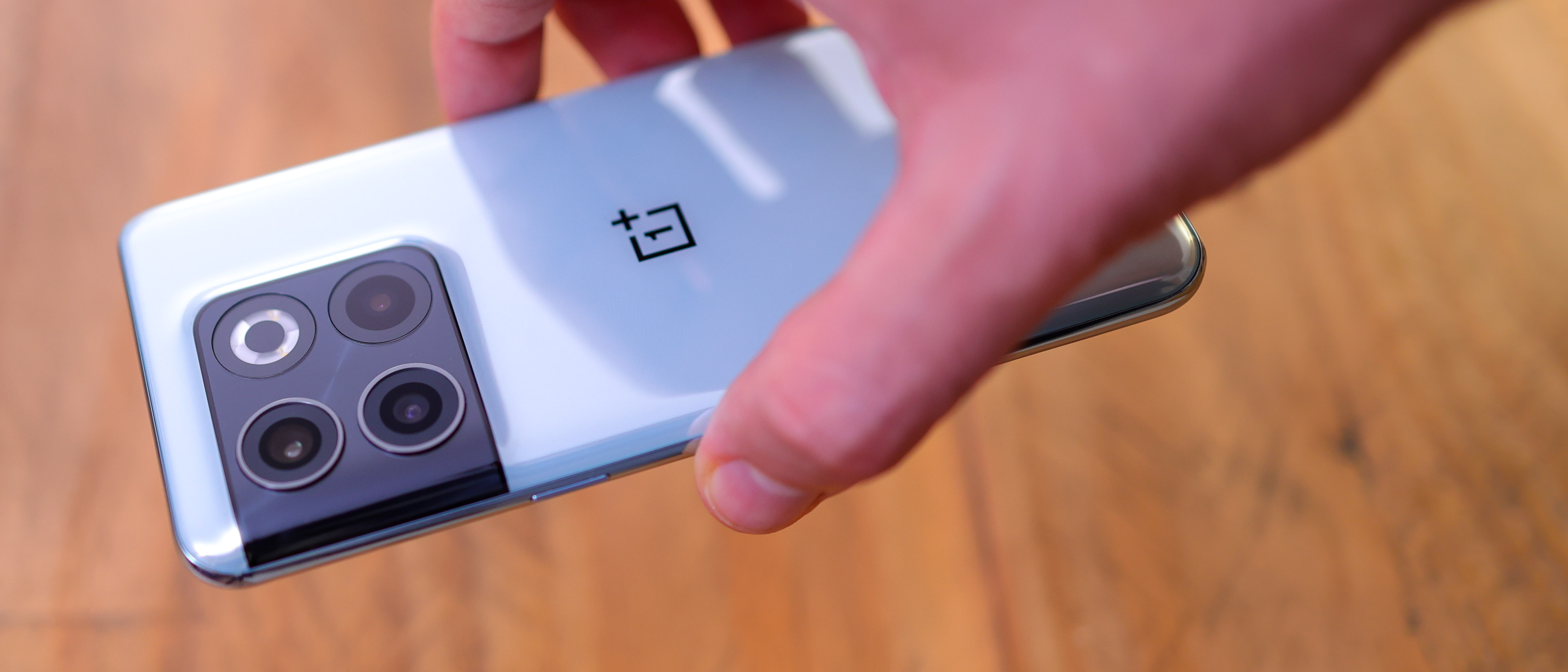Digital Camera World Verdict
The OnePlus 10T misses out on Hasselblad co-branding, but thanks to a strong 50MP Sony IMX766-powered camera, its photos still look good, and its lower price than the 10 Pro makes it relatively easy to digest. The unremarkable ultra-wide and macro cameras, and the lack of a telephoto camera don't do it any favors. Neither does the lack of wireless charging. Still, with lightning-fast wired charging and the latest processing power, anyone who needs speed will get exactly that with the 10T.
Pros
- +
Great primary camera
- +
Powerful internals
- +
Incredibly fast charging
- +
Runs a bit cooler than the 10 Pro
Cons
- -
Poor macro camera
- -
No telephoto camera
- -
Lacks wireless charging
- -
No 4K 120fps capture
Why you can trust Digital Camera World
Like fine wine and Edna Turnblad, the OnePlus 10 Pro's camera just gets better with age (thanks to software updates), so why has OnePlus switched up the tried and tested setup for the 10T – the brand's latest flagship?
The OnePlus 10T isn't a 10 Pro successor. It's more like a less fancy sibling – a reimagined mashup of the OnePlus 10 Pro, Oppo Find X5 Pro, and the Realme GT Neo 3. It's a fair bit cheaper than the 10 Pro too, starting at $649 / £629.
Unlike the OnePlus 10 Pro, and exactly like the similarly priced Realme GT Neo 3, the 10T has a flat screen that's a lower resolution than that of the 10 Pro. It also packs a plastic frame, no wireless charging, and ditches the super-ultra-wide and telephoto cameras of the Pro in favor of a small ultra-wide camera sensor, and 2MP macro camera, also like the GT Neo 3 – noticing a pattern here?
The GT Neo 3 similarities don't stop there – the 10T also features the fastest wired charging you can get in the West – 150W. What's different to Realme's speed demon is the power inside, with OnePlus packing the latest Qualcomm Snapdragon 8+ Gen 1 power into the 10T, just like the Asus Zenfone 9.
So with a different kind of buyer in mind – likely younger users who prefer maximum power and lightning-fast charging speeds, is the OnePlus 10T a smart, lower-cost alternative to the Pro, or a mediocre Realme GT Neo 3 Pro in OnePlus clothing?
Also read our guide to the best Android phones.
OnePlus 10T design and screen
The OnePlus 10T's design is a variation of that of the 10 Pro, but it also borrows heavily from the Oppo Find X3 Pro, with its new curved-glass camera bump that smoothly rises from the phone's back.
The best camera deals, reviews, product advice, and unmissable photography news, direct to your inbox!
Made of glass and plastic, the 10T doesn't feel as premium as glass and metal phones like the Xiaomi 12 Pro – though it is well-weighted, and the camera bump makes an elegant resting point for your index finger. Its frame also rounds off into the front and back nicely, so everything cohesively flows, even if it does miss out on that cold, stark, rich metal tactility you get on the similarly priced competition.
One plus for plastic is the fact it doesn't conduct heat as well as metal. The 10T runs cooler than the 10 Pro as a result, especially after a long bout of gaming – though it still gets warm after prolonged use.
The camera bump around the back of the 10T is a quadrant that has three cameras and a flash. At the bottom of the phone are a loudspeaker, a USB-C port, and a dual-SIM slot. On the right of the phone is a power button, and on the left, a volume rocker.
Available in Moonstone Black and Jade Green, the 10T's color dictates its storage capacity – the black version ships with 128GB storage, while the green 10T gets double that – 256GB storage.
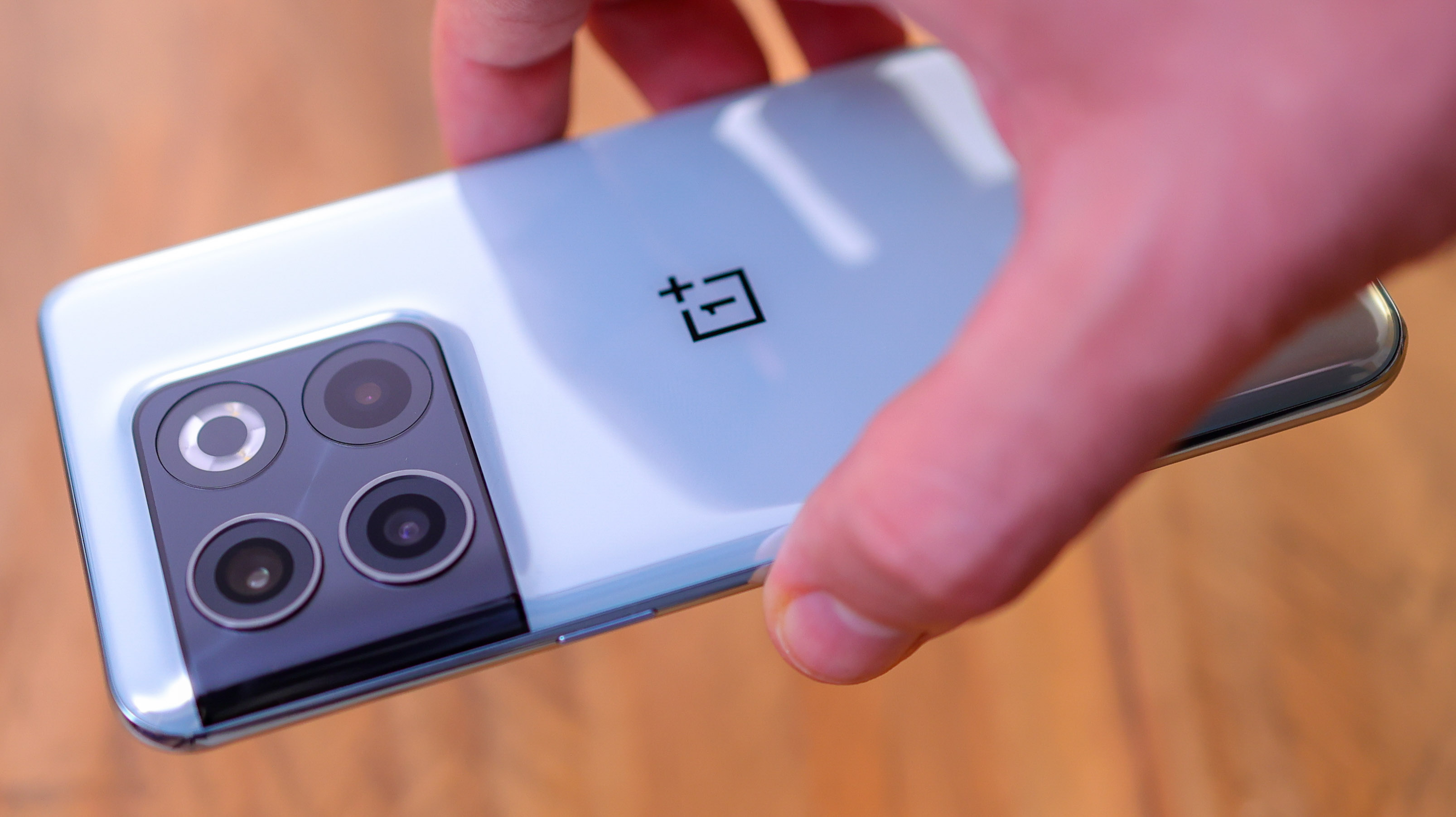


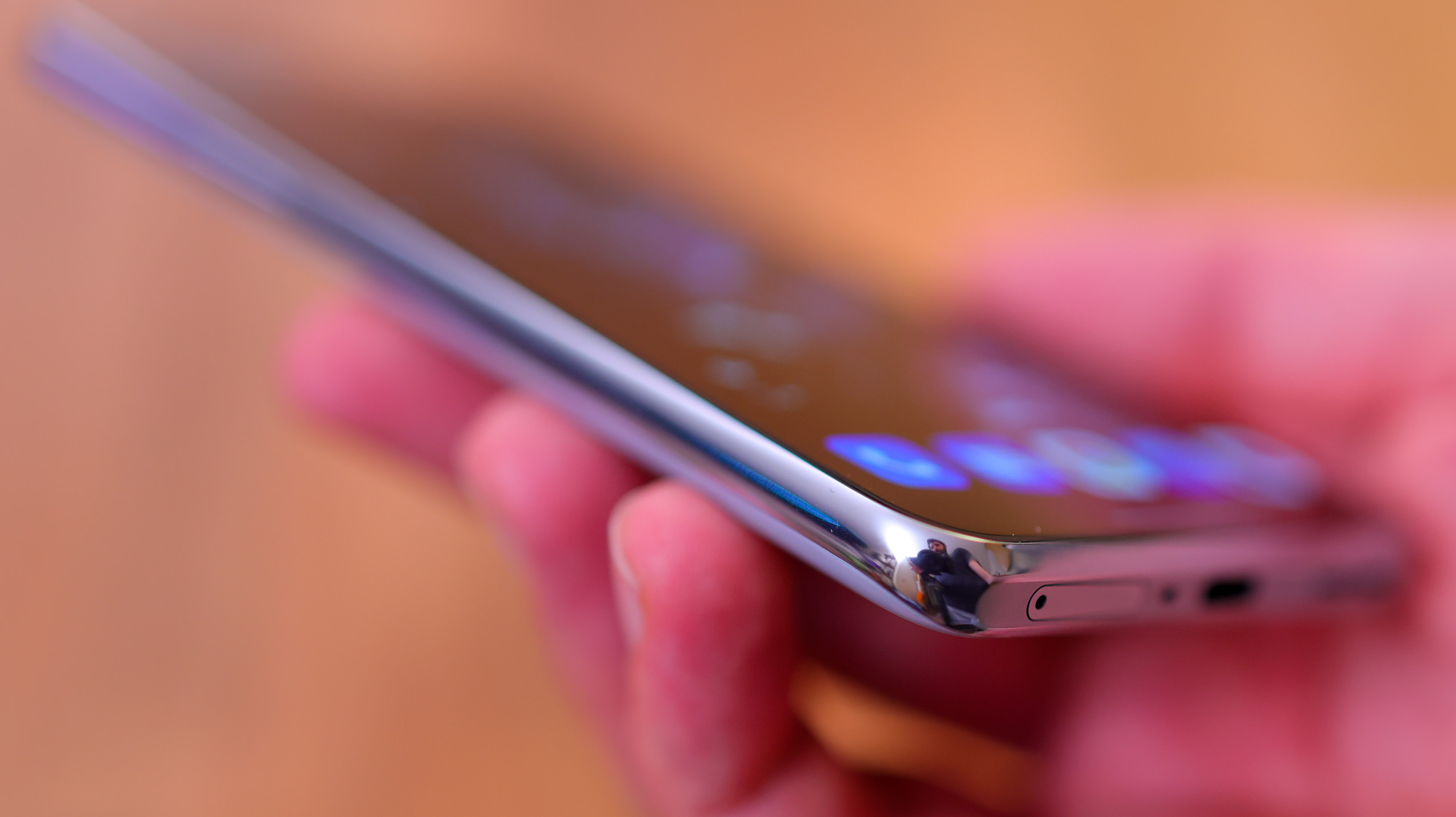

When it comes to in-hand feel, a 6.7-inch flat screen feels bigger than a 6.7-inch curved screen. That's why the flat 10T front feels like a clunkier phone than the 10 Pro, and other curvy competition, including the Pixel 6 Pro. The specs of the 10T's screen are also more upper midrange than they are flagship.
With a Full HD resolution, the 10T isn't as sharp as phones like the Sony Xperia 1 IV or Samsung Galaxy S22 Ultra. Instead, it's more in line with the lower-cost Nothing Phone (1)'s screen – high quality, but with some compromises.
In the 10T's case, the compromises don't just come in the form of less clarity; the phone is also less bright than some top-tier flagships, so isn't as easy to use in bright sunlight, peaking at 900 nits. For context, the iPhone 13 peaks at 800 nits, while the 13 Pro peaks at 1200 nits, and the S22 Ultra and S22 Plus cap out at 1750 nits.
We noticed that the 10T's screen leans towards a warmer white balance than other AMOLED flagship phones. This isn't an issue, and Oxygen OS gives you control to cool down the display in the settings – it's just a point to note.
OnePlus 10T camera
The OnePlus 10T's main camera features a 50MP Sony IMX766 sensor with 1-micron pixels, OIS, and an f/1.85 aperture lens. It's the same camera we've seen on a lot of phones from Oppo and Realme – part of the same group as OnePlus, including the Oppo Find X3 Pro, Find X5, and Find X5 Pro, as well as the Realme GT Neo 3 and 9 Pro Plus.
The 10T's secondary camera is an 8MP ultra-wide with a 1/4-inch sensor and an f/2.3 lens that captures with a 16mm focal length. Finally, the macro camera is a tiny 2MP Omnivision sensor with a fixed-focus f/2.4 lens – the same macro setup we praise Nothing for not including on its Phone (1).
With a front camera resolution of 16MP, matched with an f/2.4 lens and a 27mm focal length, selfies aren’t super-wide, so you may struggle to get loads of people in the frame.
It's interesting to note, the OnePlus 10T shares identical camera specs with the Realme GT Neo 3 – right down to the selfie camera – and every sensor is technically inferior to that of the OnePlus 10 Pro. This phone is the clearest illustration that OnePlus is now well and truly an Oppo company, sharing configurations with other Oppo brands – and nowhere is that clearer than in the camera mix.

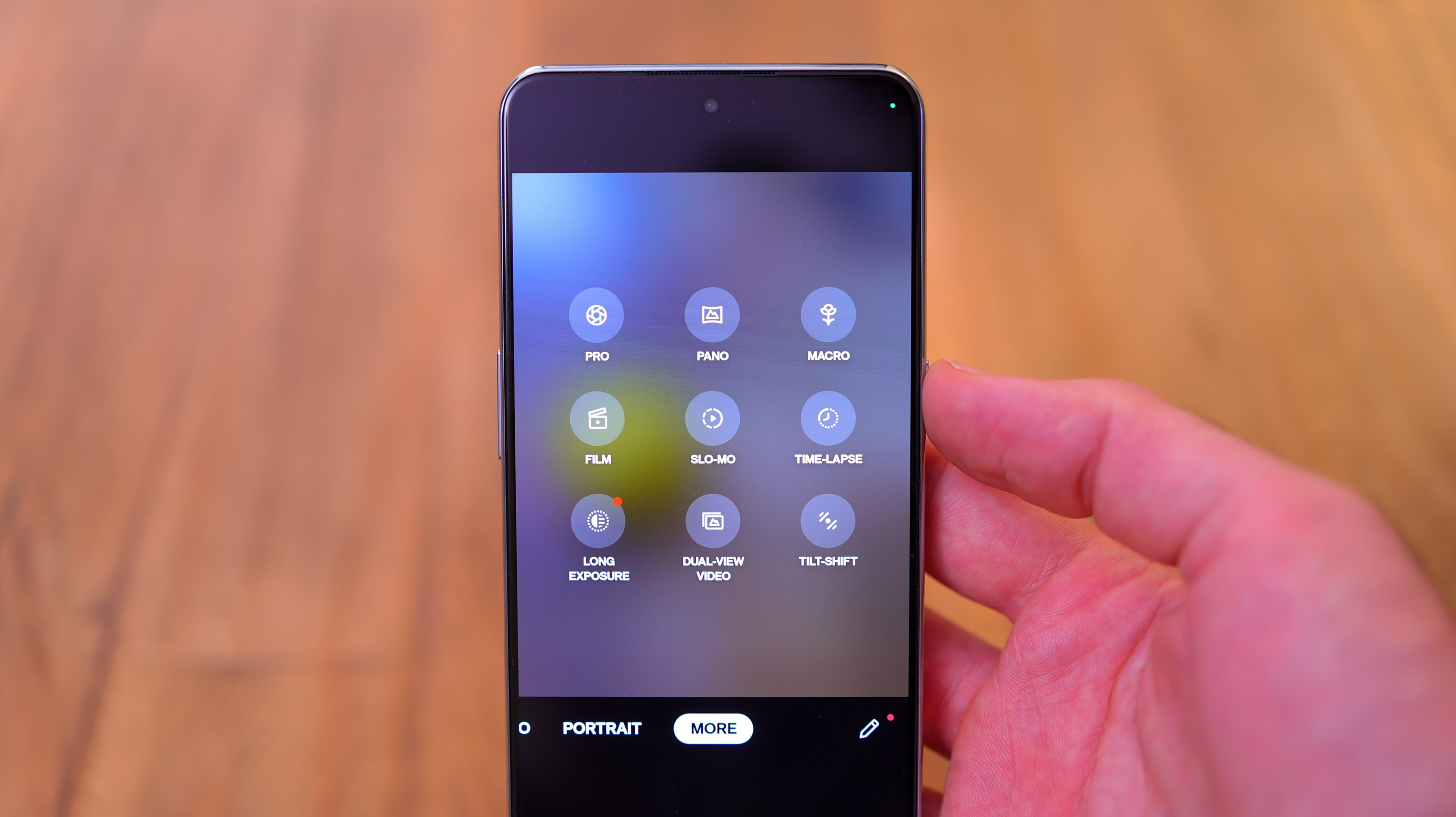

As for shooting modes, these include old favorites like Night, Portrait, Video, Photo, Pro Mode, Pano, Macro, Film, Slo-mo, Time-lapse, Long exposure, Dual-view video, and Tilt-shift.
The OnePlus 10T captures video at up to 4K resolution, 60fps. It also shoots RAW photos in Pro mode and can shoot with a manual ISO of up to 6400, and a shutter speed as long as 32 seconds.
OnePlus 10T camera review
The Sony IMX766 sensor and OnePlus's camera tuning really do save the 10T's bacon as far as camera performance goes. The main camera is a very good all-rounder across lighting conditions, capturing sharp images with respectable amounts of shadow detail and good dynamic range.
We have grown to really like the OnePlus 10 Pro – its main camera has been updated to correct some of our early issues with it when we first tested it. Nevertheless, the 10T's primary camera stacks up well against it.
Just like other IMX766-powered phones, when capturing subjects nearer than a meter away, the 10T will pull out a slightly soft background, and close-up photos from the main camera are swimming with depth.
The main camera isn't quite as wide as that of the OnePlus 10 Pro, and neither is the ultra-wide, so if you know you're a fan of expansive shots, you might want to look elsewhere. The phone's photos do look a bit less dramatic – more natural, with lower contrast and brighter shadows, which some will prefer. In turn, while colors aren't as deep or atmospheric, they're a bit livelier with more even exposure across the whole photo.
The 10T's 8MP ultrawide camera isn't quite so impressive, missing out on autofocus and not getting as wide as most of the competition, including the iPhone 13 Pro Max and OnePlus 10 Pro, as illustrated in the photo comparison below. Its photos aren't brimming with detail, so can't be comfortably cropped into, though if shot in daylight, enjoy enough information for relatively crisp magazine-sized prints.
OnePlus enables night mode across both the wide and ultra-wide cameras, and it activates automatically when lighting is low, doing a good job with the main camera, and a good enough job with the ultra-wide to keep photos looking usable. Though don't go cropping in on the ultra-wide's night photos – detail won't hold up.
Unsurprisingly, the OnePlus 10T camera's Achilles heel is its zoom. There's no telephoto camera, and as illustrated above, when compared to the OnePlus 10 Pro and iPhone 13 Pro Max, both with optical reach, and more markedly, the Xiaomi 12s Ultra with its periscope camera, the 10T can't hold its own.
The OnePlus 10T's selfie camera is fine, but won't wow you. There's no autofocus, so while results pull out decent detail, you can't get too creative. A decent portrait mode and a full suite of face-distorting beauty modes are available – both on the front and primary cameras.
Camera samples











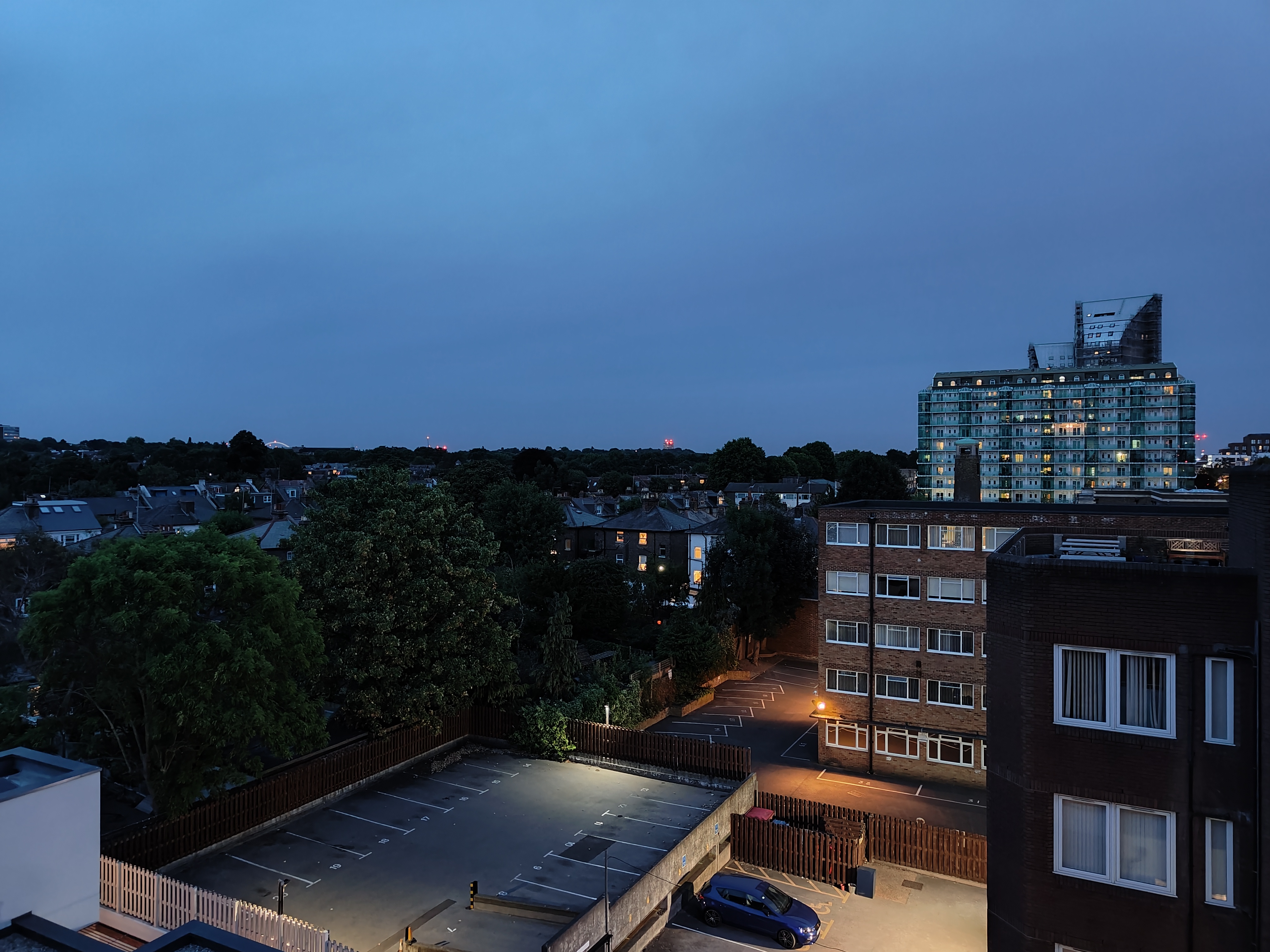

OnePlus 10T additional specs
While the OnePlus 10T's primary camera is very good, the camera mix doesn't justify the phone's price – but the power and speed the phone packs definitely will for a certain type of user.
With a Qualcomm Snapdragon 8+ Gen 1 at the helm, the OnePlus 10T joins the elite of Android flagships when it comes to gaming clout and general speed. It's also loaded with RAM – our version has 16GB, plus 7GB of dynamic RAM, which means over 30 applications can live in the background, doing their thing before they'll need to be shut down.
Performance is, unsurprisingly excellent, and running Android 12 with OnePlus's Oxygen OS 12 over the top, the 10T enjoys superb app support, with full Google Play Store access. Additionally, with either 128GB or 256GB storage, there's a healthy amount of space for games, apps, files, photos, and movies. One point to note: no SD card expansion means you'll need to pick the right capacity for your needs when you buy the phone.
With an under-display fingerprint scanner that works quickly, and can be matched with face unlocking for even nippier access to your device, biometric security is where it needs to be for the price.
One point to note – the 10 Pro raised the height of the fingerprint scanner on the screen, it's a shame the 10T has brought it back down nearer the chin – a more fiddly place to press. Another area the 10T feels like a bit of a step backward for the brand, despite performing well.
We didn't expect class-leading battery life from the OnePlus 10T's 4800mAh battery, given its slightly smaller size than much of the competition, but were happy to find it lasted a full day. In benchmarks, it outperformed the Samsung Galaxy S22 Ultra and Sony Xperia 1 IV, draining 60 percent after 12 hours of screen-on time, though it couldn't best the OnePlus 10 Pro, Oppo Find X5 Pro or Vivo X80 Pro 5G.
As for charging speeds, from totally dead, the phone powered up in around 22 minutes. From 1 percent with the screen on, though, we were able to shave a few minutes off, hitting OnePlus's claim that its 150W charging can power the phone up fully in 19 minutes. So while there's no wireless charging here, which will likely turn some off, the best-in-class wired charging speeds are the 10T's saving grace.
Verdict
When we saw the OnePlus 10T's spec sheet, we thought its camera would be competing with the best budget camera phones of 2022, rather than the best flagships. Thanks to its strong main camera performance, though, it holds its own and captures reliably strong results from the primary 50MP camera. But that doesn't change the fact you can get the same camera hardware in the Realme 9 Pro Plus – a phone that costs significantly less than half what the 10T does.
As for the rest of the phone, everything comes together well, with glimmers of brilliance – performance is nippy, the interface was bug-free in our time testing the phone, and the phone's charging speeds impressed. We'd just expect a little more for the money, given the fact the new fandangle 150W fast charging only gives you a 13-minute edge over the 80W OnePlus 10 Pro's charging speeds.
If you don't need the latest power and fastest charging speed, then the OnePlus 10T shouldn't blip your radar, with alternatives including the lower-cost Nothing Phone (1), with its richer features-set, or the Google Pixel 6, an excellent camera phone with wireless charging and a more stock interface.
Read more
Best camera phones
Best rugged phones
Best budget phones
Basil Kronfli is a freelance technology journalist, consultant, and content creator. He trained in graphic design and started his career at Canon Europe before moving into journalism. Basil is also experienced in video production, independently running the YouTube channel TechEdit, and during his time at Future, he worked alongside the Digital Camera World team as a senior video producer.
